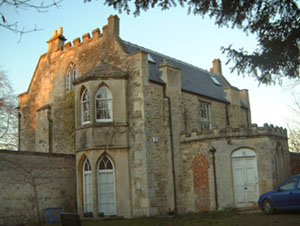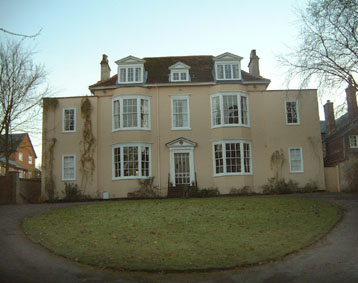|
|
Web Hosting by Netfirms | Free Domain Names by Netfirms |
|
|
|
|
Hotspot
15. The Gentlemen's
Houses
|
|
The favoured place for Victorian development lay north of Tree Lane where, after inclosure, plots could be taken on long leases that made building worth while. Most land in Iffley belonged to the Donnington Hospital (see 16) which was anxious, after about 1840, for tenants who would build valuable property. P) The Priory was built
c1840, in fashionable Gothic including battlements. From 1859-63 it housed
a community of Ursuline nuns who had a small school, but its main tenant
was Alfred Kent, a retired merchant. Alfred Wickson, one of the residents
of Stone Cottages (see 14) worked for the Kents as gardener and coachman
and inherited £1,000 when Mrs Kent died in 1900. He bought property
in Cowley and never looked back. |
 The Priory, front |
 The Priory, back |
| E, H) Hawkwell
House Hotel is misleadingly named. First there was the field called
Hawkwell; then at inclosure it was divided into plots; then John Parsons,
the Oxford banker, built a house on one of them, and called it Hawkwell
backing onto Tree Lane. He never lived there but had a summer home at 'The Cottage', Tree Lane. Then another grand house was built on the plot between
Parsons' land and Church Way; that was called The Elms; the Strong
family lived in it and, later, the Allens; the last Iffley Allen died in
1970 and the house became The Elms Hotel, the purchasers also acquiring
Hawkwell which they used as an annexe. The hotel changed hands, has been
greatly enlarged over Hawkwell grounds and has taken the Hawkwell name.
Hawkwell does not deserve to be elbowed out, being a fine house from the
early 19th century, with a Grecian-style portico; it was the centre of Parsons'
country estate where he farmed and where he shot pheasant; it has a surviving
game store beside the house, for hanging the birds. The Elms was a more
conventional and less elegant house, but surrounded by fine gardens and
having a commanding presence above Church Way. |
|
|
|
|
|
D) Denton House,
W) Wootten and B) Beechwood all date from the earliest period
of "gentrification" in Iffley, the 1790s. Businessmen doing
well in Oxford liked the rising ground above Iffley Turn – healthy
and pleasant, conveniently placed for the Turnpike into the city and offering
plots large enough for impressive houses. They took long leases from Donnington,
the landowners (see 16). |
|
|
| Beechwood was built in 1798, a beautiful house with colour-washed plaster, two-storey bays flanking the entrance and short, symmetrical wings east and west. It now belongs to All Souls. John Sparrow, warden of the college 1952-77, retired to it. |
 Beechwood House |
|
Wootten
stands next to Beechwood; it is also beautiful, L-shaped with two storeys.
Richard Wootten was Mayor of Oxford in 1815 and 1834, and his money came
from banking. The house has a remarkable extent of surviving ground although
it has lost some to development in Wootten Drive (1978).
|
|
|
| Its later neighbour Wood
House (WH) has disappeared under Woodhouse Way and Baytree Close.
See diagram showing land development in Modern Times in History. |